
How to Use Raspberry Pi 4 Model B: Examples, Pinouts, and Specs
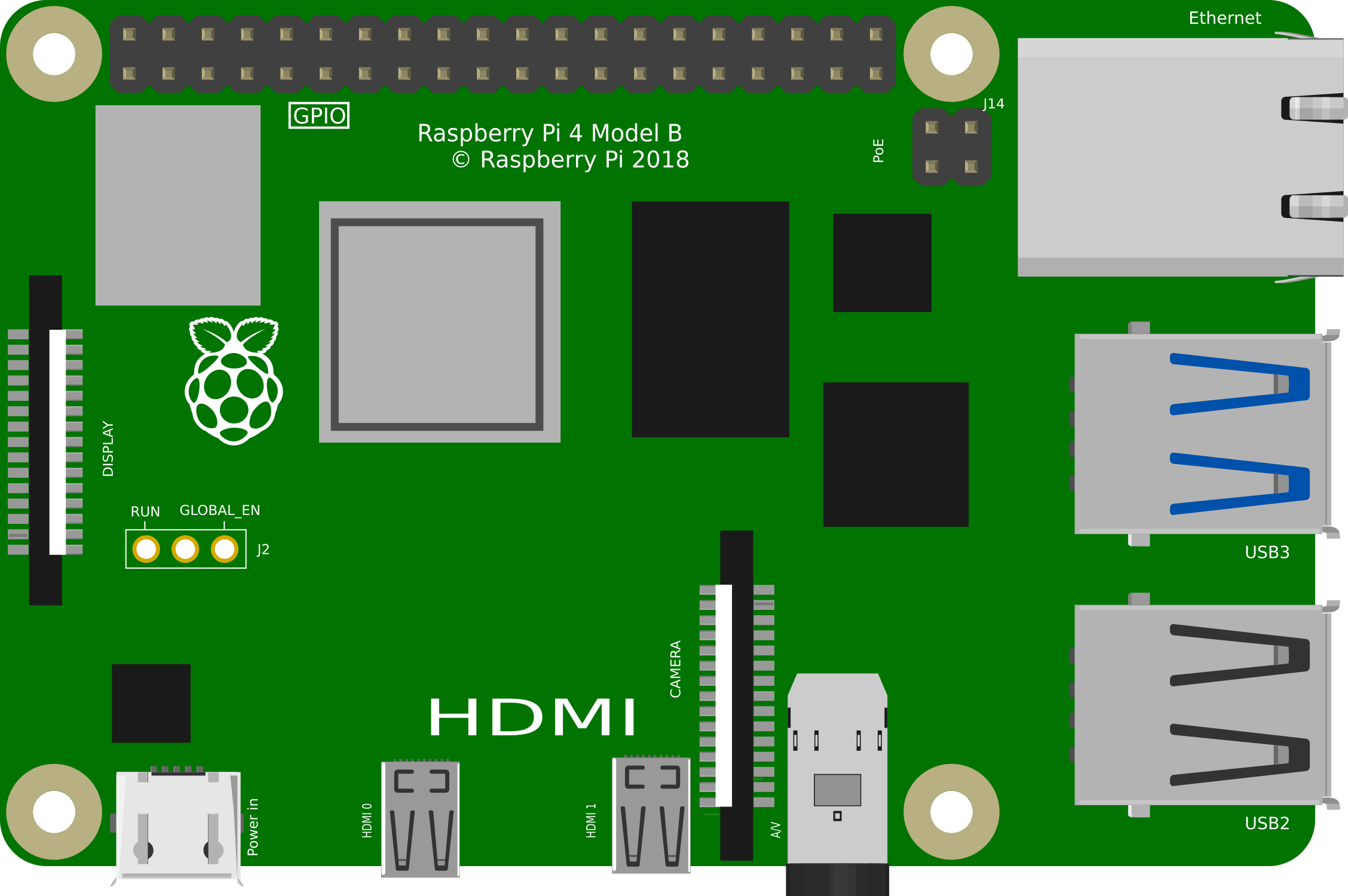
 Design with Raspberry Pi 4 Model B in Cirkit Designer
Design with Raspberry Pi 4 Model B in Cirkit DesignerIntroduction
The Raspberry Pi 4 Model B is a compact, affordable single-board computer designed for a wide range of applications. It features a powerful quad-core processor, up to 8GB of RAM, multiple USB ports, dual micro-HDMI outputs, and Gigabit Ethernet connectivity. This versatile device is ideal for projects such as programming, media centers, IoT applications, home automation, and educational purposes. Its small form factor and robust performance make it a popular choice for hobbyists, students, and professionals alike.
Explore Projects Built with Raspberry Pi 4 Model B
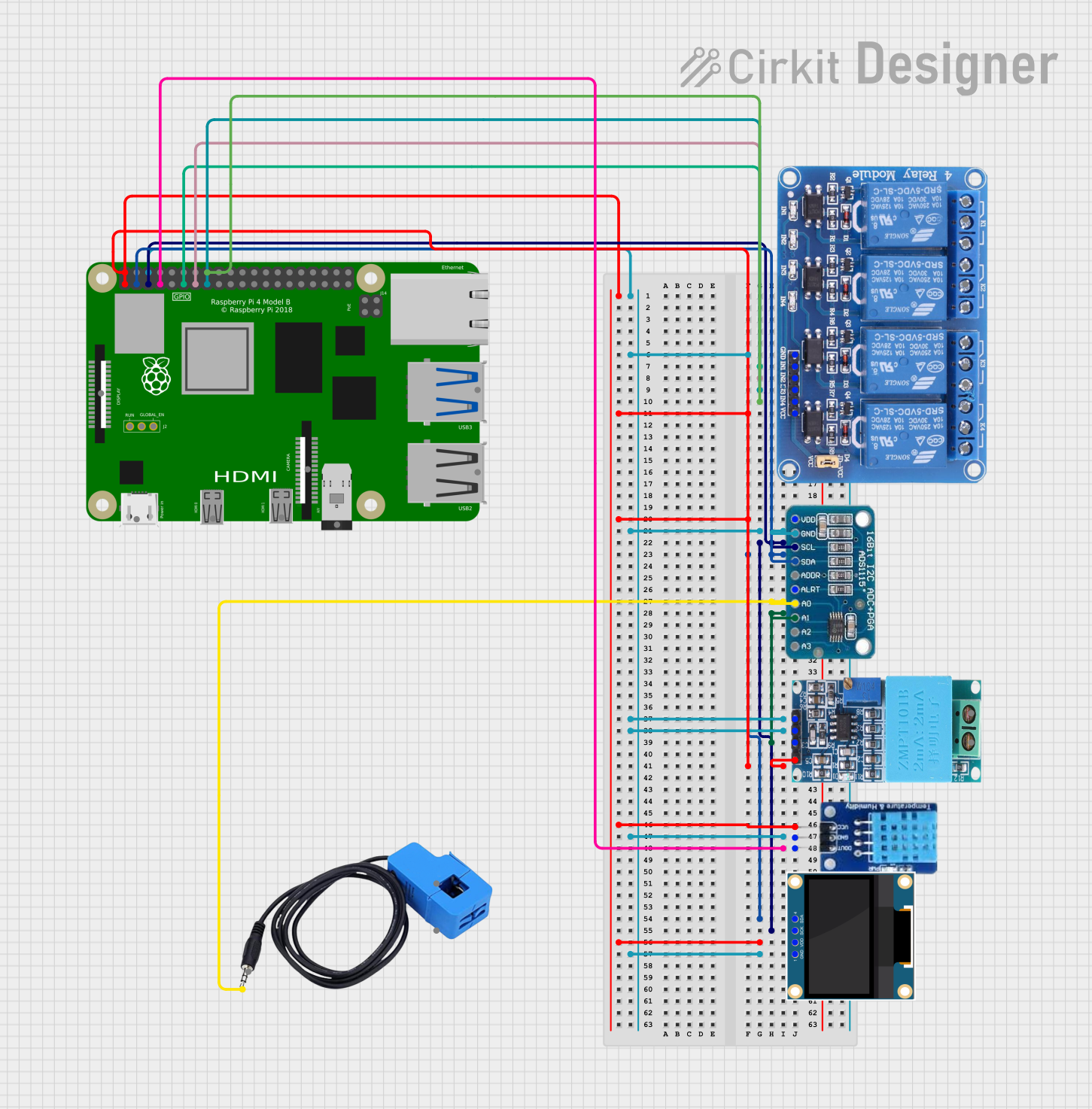
 Open Project in Cirkit Designer
Open Project in Cirkit Designer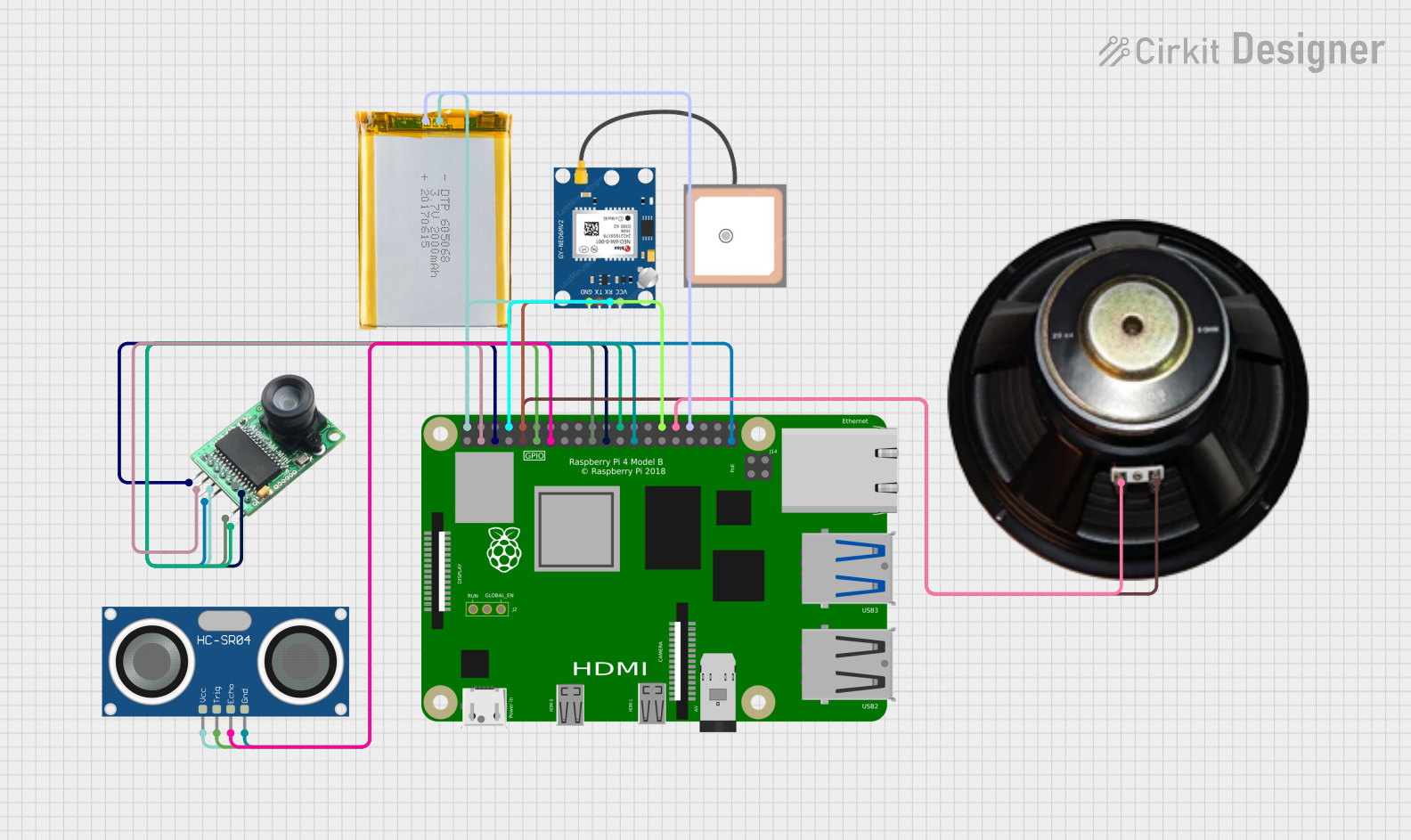
 Open Project in Cirkit Designer
Open Project in Cirkit Designer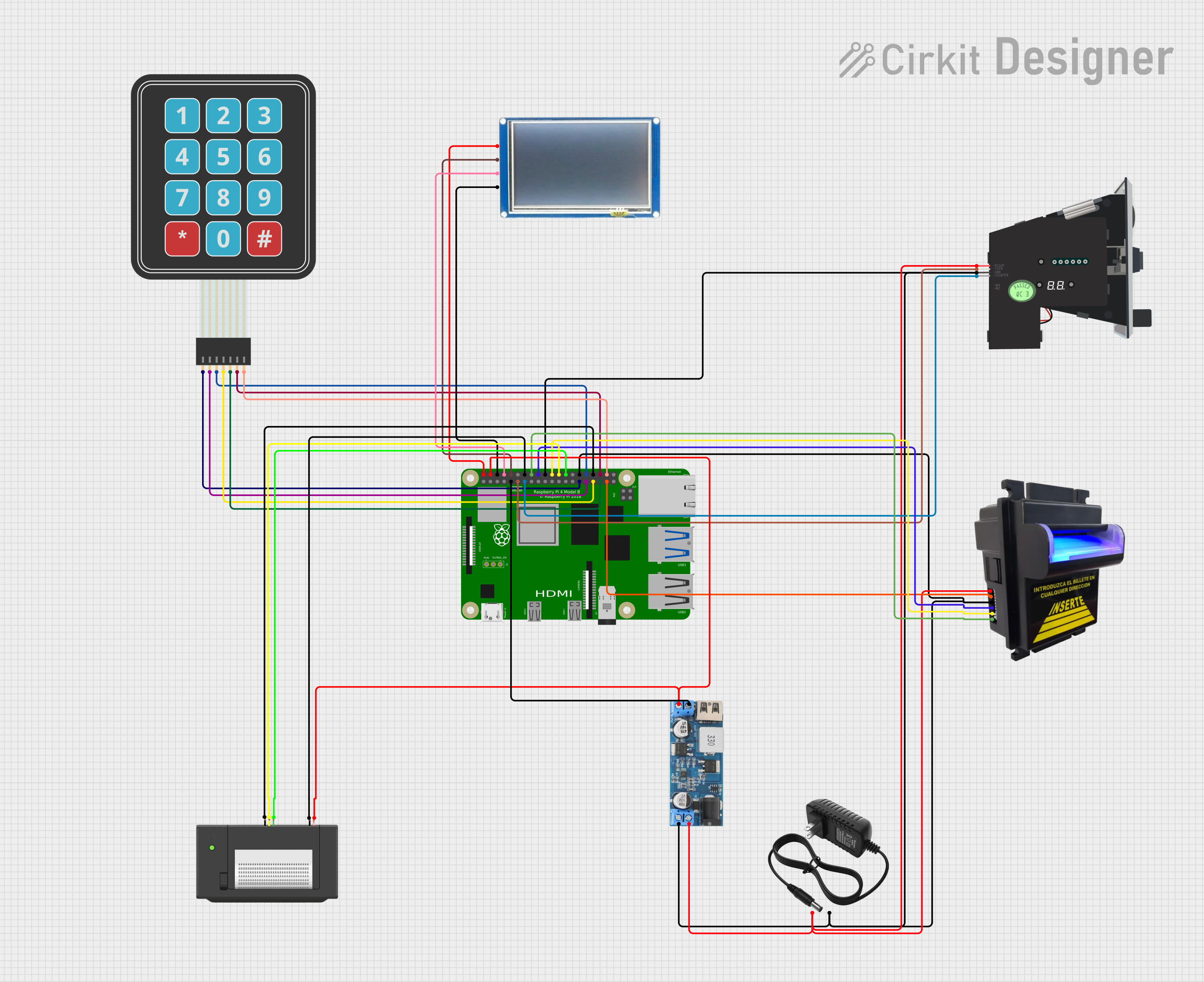
 Open Project in Cirkit Designer
Open Project in Cirkit Designer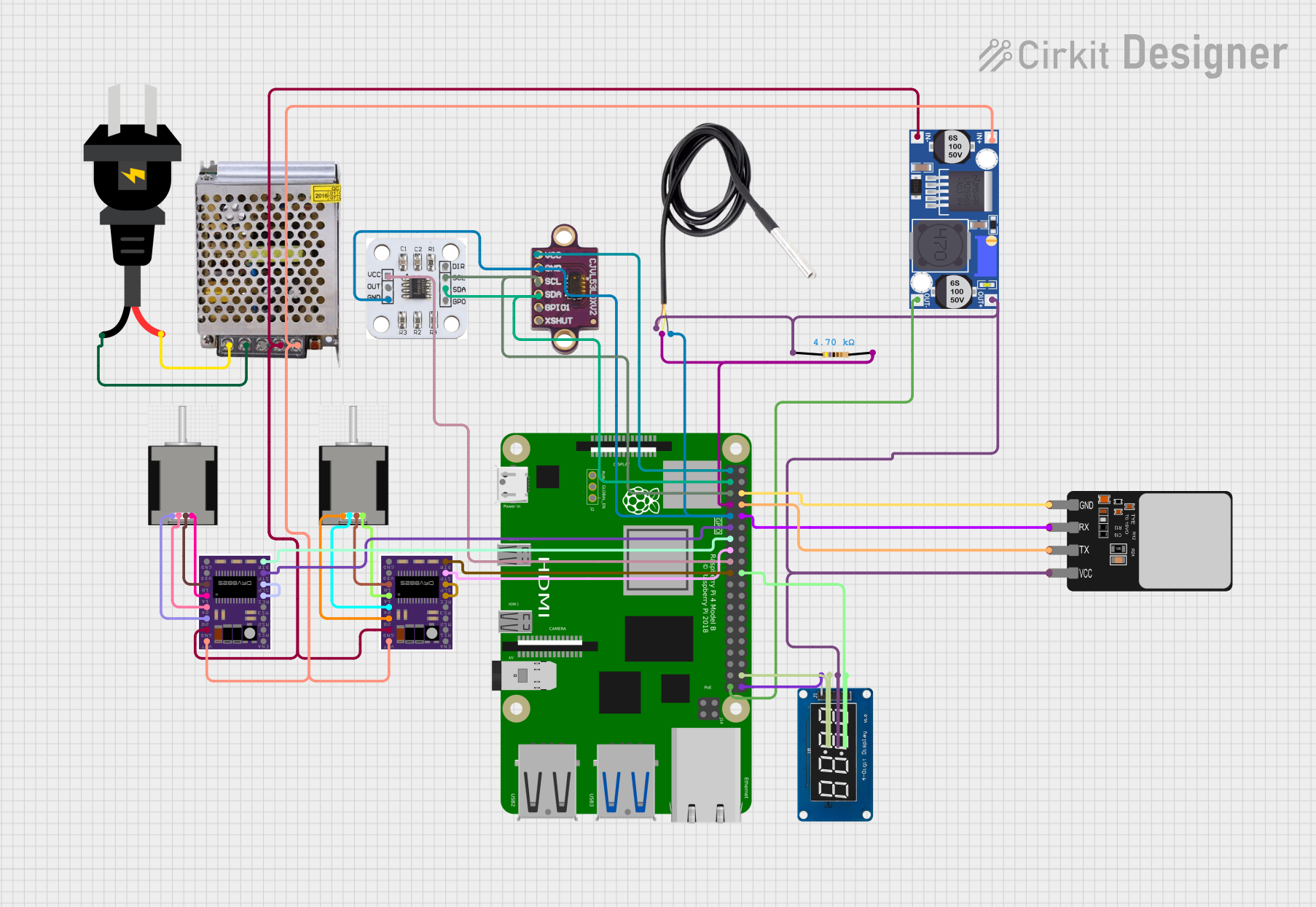
 Open Project in Cirkit Designer
Open Project in Cirkit DesignerExplore Projects Built with Raspberry Pi 4 Model B

 Open Project in Cirkit Designer
Open Project in Cirkit Designer
 Open Project in Cirkit Designer
Open Project in Cirkit Designer
 Open Project in Cirkit Designer
Open Project in Cirkit Designer
 Open Project in Cirkit Designer
Open Project in Cirkit DesignerTechnical Specifications
The Raspberry Pi 4 Model B offers the following key technical details:
General Specifications
| Feature | Specification |
|---|---|
| Processor | Broadcom BCM2711, Quad-core Cortex-A72 (ARM v8) 64-bit SoC @ 1.5GHz |
| RAM Options | 2GB, 4GB, or 8GB LPDDR4-3200 SDRAM |
| GPU | VideoCore VI, supporting OpenGL ES 3.0, 4K video decoding |
| Storage | MicroSD card slot for OS and data storage |
| Connectivity | Gigabit Ethernet, 802.11ac Wi-Fi, Bluetooth 5.0 |
| USB Ports | 2 × USB 3.0, 2 × USB 2.0 |
| Video Output | 2 × micro-HDMI ports (up to 4Kp60 supported) |
| Audio Output | 3.5mm audio jack, HDMI audio |
| GPIO | 40-pin GPIO header (backward-compatible with previous Raspberry Pi models) |
| Power Supply | 5V/3A via USB-C connector |
| Dimensions | 85.6mm × 56.5mm × 17mm |
Pin Configuration
The Raspberry Pi 4 Model B features a 40-pin GPIO header. Below is a summary of the pin configuration:
| Pin Number | Pin Name | Functionality |
|---|---|---|
| 1 | 3.3V Power | 3.3V power supply |
| 2 | 5V Power | 5V power supply |
| 3 | GPIO2 (SDA1) | I2C Data |
| 4 | 5V Power | 5V power supply |
| 5 | GPIO3 (SCL1) | I2C Clock |
| 6 | Ground | Ground |
| 7 | GPIO4 | General-purpose I/O |
| 8 | GPIO14 (TXD0) | UART Transmit |
| 9 | Ground | Ground |
| 10 | GPIO15 (RXD0) | UART Receive |
| ... | ... | ... |
| 39 | Ground | Ground |
| 40 | GPIO21 | General-purpose I/O |
For a complete GPIO pinout, refer to the official Raspberry Pi documentation.
Usage Instructions
Setting Up the Raspberry Pi 4 Model B
- Prepare the MicroSD Card:
- Download the Raspberry Pi OS from the official Raspberry Pi website.
- Use a tool like Raspberry Pi Imager or Balena Etcher to flash the OS onto a microSD card.
- Connect Peripherals:
- Insert the microSD card into the Raspberry Pi.
- Connect a monitor via one of the micro-HDMI ports.
- Attach a keyboard and mouse to the USB ports.
- Power Up:
- Connect a 5V/3A USB-C power supply to the Raspberry Pi.
- The device will boot up, and you can follow the on-screen instructions to complete the setup.
Using GPIO Pins
The GPIO pins can be used to interface with external components like LEDs, sensors, and motors. Below is an example of controlling an LED using Python:
Import the GPIO library
import RPi.GPIO as GPIO import time
Set the GPIO mode to BCM (Broadcom pin numbering)
GPIO.setmode(GPIO.BCM)
Define the GPIO pin connected to the LED
LED_PIN = 18
Set up the LED pin as an output
GPIO.setup(LED_PIN, GPIO.OUT)
Blink the LED in a loop
try: while True: GPIO.output(LED_PIN, GPIO.HIGH) # Turn the LED on time.sleep(1) # Wait for 1 second GPIO.output(LED_PIN, GPIO.LOW) # Turn the LED off time.sleep(1) # Wait for 1 second except KeyboardInterrupt: # Clean up GPIO settings on exit GPIO.cleanup()
Best Practices
- Use a high-quality power supply to ensure stable operation.
- Avoid connecting components to GPIO pins without proper resistors or protection circuits.
- Regularly update the Raspberry Pi OS to benefit from the latest features and security patches.
Troubleshooting and FAQs
Common Issues
- The Raspberry Pi does not boot:
- Ensure the microSD card is properly inserted and contains a valid OS image.
- Verify that the power supply provides sufficient current (5V/3A).
- No display on the monitor:
- Check the micro-HDMI cable and ensure it is connected to the correct port.
- Verify that the monitor is set to the correct input source.
- Wi-Fi connectivity issues:
- Ensure the Wi-Fi credentials are entered correctly.
- Move the Raspberry Pi closer to the router to improve signal strength.
FAQs
- Can I power the Raspberry Pi 4 Model B via GPIO pins?
- Yes, you can power the Raspberry Pi using the 5V and GND pins on the GPIO header, but this is not recommended as it bypasses the onboard power management circuitry.
- What operating systems are compatible with the Raspberry Pi 4 Model B?
- The Raspberry Pi 4 supports Raspberry Pi OS, Ubuntu, and other Linux-based distributions. It can also run lightweight versions of Windows 10 IoT Core.
- How do I reset the Raspberry Pi?
- Simply disconnect and reconnect the power supply. Alternatively, you can use a reset circuit connected to the GPIO pins.
By following this documentation, you can effectively set up and use the Raspberry Pi 4 Model B for a variety of projects.